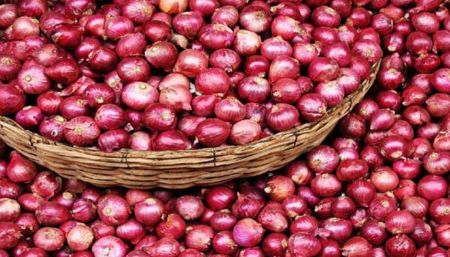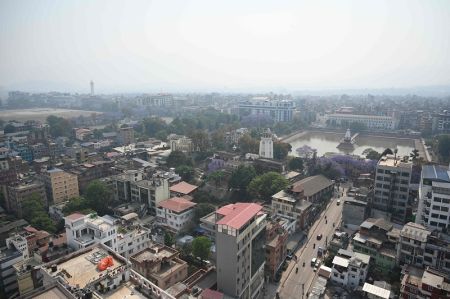
By Rajendra Prakash Manandhar
In 1984, I had just returned to Kathmandu after studying Cement Technology (1st batch) at CRI/NCB India. One of my friends asked me about the best type of cement which would last long and resist the polluted environment. We have seen in many toilets, drainpipes, roofs of buildings and other different places the cement plaster being deteriorated by urine, domestic waste, heat, polluted environment etc. I was once in a paper factory in Nepal. The factory had two concrete tanks, plastered with OPC cement. One tank was used for cold water and the other for warm water. The plaster in the warm water tank was cracked & falling, but nothing had happened to the cold tank. At our homes, we notice water leaking and its spot spreading on the concrete ceiling. At many other places, we see hair cracks on the plastered wall. These are some of the common problems with OPC. The best way to minimize such problems is to use PPC/PSC instead of OPC.
During the 9th International Congress on the Chemistry of Cement, New Delhi, India in 1992, one of the delegates had presented some video clips showing the difference between OPC & PPC. The clips showed that two cement bars - one made of OPC and the other with PPC were kept immersed in water for 15 years. Both the bars had a steel rod inside. After 15 yrs, when the bars were opened, it was found that the steel rod in the PPC bar was fresh and Shinning like before, but the steel rod inside the OPC bar was found corroded and damaged. Thus the clips demonstrated the quality of PPC.
AM Neville, an expert from world authority on cement & concrete puts his view on PPC use: “The various cementitious materials- fly ash, silica fume, blast furnace slag, are here to stay. In their various ways and under various circumstances, they all have an important role to play in concrete, the days of Pure Portland Cement, once upon a time lauded by cement manufacturers have gone forever. Portland is vital ingredient, but the other cementitious materials are highly valuable”.
A Pozzolanic cement consisting of ground clay and portland cement was described in 1909 by Potter, who stated that over 5000 tons of it were used in fresh water and seawater construction about that time. Later, this cement was known as Potter Cement. For many years up to about 1915, the Lafarge Company in France used burnt clay in to manufacture ‘undecomposable’ cement. A cement composed of 70 per cent Portland cement & 30 percent burnt clay was used to build the Sennar Dam on the Blue Nile from 1919 to 1925. The same material (Oil-well Cements manufactured in Great Britain) was used in construction of the Bonneville Dam in the USA. Burnt clay, an excellent artificial Pozzolana, is produced by burning suitable clay or shale at a temperature of 600° to 900° and above. Artifical pozzolanas are burnt clays and shales, spent oil shales, burnt maize/ rice husks, burnt moler and pulverized fuel ‘fly ash’ whereas volcanic deposits are natural Pozzolana.
Effect of pozzolana addition on hydration and performance of PSC:
Pozzolana was added (5-25% by weight) to the binary blends (OPC + Slag) and the resulting ternary blends were subjected to hydration and the performance was studied. The results indicated that addition of Pozzolana up to 10 per cent does not affect the properties of the binary system significations. It has also been observed that the ternary blends show better sulphate resistance compared to the binary blends.
The production and use of blended cement, especially PPC, has gradually increased worldwide in recent years. Its larger use in different countries is an indicator of its acceptability as well as suitability for various types of construction. Industrial wastes or the by–product ‘fly ash’ from thermal power stations and slag from steel plants are used for making blended cements such as Portland Pozzolana Cement (PPC) and Portlant Slag Cement (PSC). More than 50 per cent of the blended cements produced is PPC today. Blended cements such as PPC and PSC offer unique advantages to the concrete. In other words, PPC is better than OPC in terms of quality, and strength, and has a longer life than OPC. We could compare these unique characters of PPC with the antibodies in the human body that protect from different diseases.
OPC is made by grinding Clinker and Gypsum
One ton of clinker requires approx 1.5 tons of limestone whose reserves are limited. PPC/PSC is manufactured by grinding clinker with fly ash/slag and gypsum or blending OPC with fly ash and slag. Thus, limestone consumption can be reduced by producing PPC/PSC.
OPC: Clinker 95%+ Gypsum 5%
PPC: Clinker 70% + Gypsum 5% + Fly ash 25%
PSC: Clinker 45% + Gypsum 5% + Slag 50%, (depending upon quality of Slag)
Nepal Bureau of Standard has formulated the standard for PPC and PSC. PPC/PSC produced has to meet the quality parameters laid down for specific cement type. Generally engineers/ consultant/ and builders contractors decide on the type of cement to be used in the construction of houses, building roads, water tanks etc. Design parameter, types of construction, ground condition, durability requirement and environmental conditions are important factors while selecting the appropriate type of cement for any application.
Extra Qualities Benefit of PPC
PPC provides numerous environmental benefits such as conservation of limestone, reduction in green house gases in cement manufacturing and utilization of industrial wastes/ by-products - fly ash. It thus increases production of cement in the country. The government can take more benefit by collecting more tax on technical grounds and economics. There is a sound case for use of PPC in concrete due to:
- Water resistance due to high density concrete
- Improves workability of concrete
- Reduces bleeding
- Reduces heat of hydration preventing cracks
- No need to add any plasticizer like cement silica.
- Reduces permeability of concrete enhanced
- Gives strength, has higher durability than OPC
- Higher resistance to sulphate and chloride
- Better resistance to alkali – aggregate reaction
- Reduces leaching calcium hydroxide
- Low volume (shrinkage) change preventing cracks.
Hydration of Ordinary Portland Cement (OPC): Hydration is the chemical process by which slilicates and aluminates of the cement clinker, when mixed with water, form hydrated compounds and during the course of reaction produce Calcium Hydroxide and Calcium Silicate Hydrate as shown in the following chemical equation:
Cement + Water→C-S-H + Ca (OH) 2
The compound Ca (OH) 2 being easily soluble in water leaches out of the concrete surface. This leached Ca (OH)2 deposits on the surface as a coating layer cause deterioration of the concrete.
Hydration of Portland Pozzolana Cement /Portland Slag Cement:
When water is added to PPC/PSC, hydration of OPC constituents occurs first. This is known as primary hydration. During this process, the calcium silicates of OPC reacts with water to produce Calcium Silicate Hydrate gel and Calcium Hydroxide. Subsequently, fly-ash / slag present in cement hydrate in presence of Ca (OH) 2 produced during OPC hydration, produces further Calcium Silicate Hydrates. This process is known as secondary hydration. This makes the hydrated silicate gel structure of PPC/PSC more denser and contributes to higher durability of the concrete. But in OPC hydration, the liberated Ca(OH)2 forms a coating layer on the concrete, which is weak and is therefore removed by external pollutants/environment causing deterioration of the concrete. But this Ca(OH)2 is utilized in PPC/PSC in formation of C-S-H (II) which is stronger than C-S-H(I) thus reinforcing the original silicate gel (I) to produce a much denser gel structure which contributes to a higher degree of strength and durability. More and more Ca (OH) 2 is absorbed preventing formation of coating as shown in the following chemical equations:
Clinker + Water → C-S-H (I) + Ca (OH) 2
Ca (OH)2 + Fly Ash/ Slag → C-S-H (II)
Concrete is not a structural material by itself but it slowly evolves into a structural material in four stages which are:
1-Plastic, 2- Stiffening (setting), 3- Hardening, 4- Enduring
In the plastic stage of concrete, the fineness and initial setting time is important. In the stiffening stage, final setting time is important. Tri–Calcium aluminate (C3A) of cement helps in this. In the hardening stage, C3S, C2S, strength and fineness are of vital importance. But the most important stage for durability of the concrete structure is the enduring stage. In this stage, the high quality cement parameters balanced physical and chemical parameters, high strength, low impurities, high soundness, optimum fineness etc can only contribute to the durability and high performance of the concrete structure. Today’s needs are not only high 28-day strength of cement but also high quality cement with (TOTAL QUALITY ATTRIBUTS) EXTRA QUALITY BENEFITS other than strength. These benefits are the resultant products of best clinker & fly ash/ slag of high quality and gypsum in desired proportion to achieve high ultimate physical/ chemical properties. There are a number of parameters to be controlled as inputs during clinker production. Among them, correct proportioning of oxides CaO, SiO2, Al2O3, Fe2O3 which is termed as raw mix design and proportioning raw materials is most important. The proportioning C3S, C2S, C3A, C4AF are fixed after raw mix design. The preferable ranges of these compounds are 45-55, 20-30, 5-8, 8-12 etc. Strict quality control of raw materials, cement, process control are to be carried out. In the same way, the blending material fly ash should be according to the parameter given by Nepal Standard NS285.
Application of PPC
PPC can be used in almost all kinds of construction where OPC is used. For example, general building construction (residential, commercial, and industrial), bridges, flyovers, culverts, dams, irrigation projects, water retaining structures, ports & harbours’ etc - except where high early strength is critical. Taking into account the special properties of concrete made from PPC, there are specific types of job where the use of PPC would be particularly advantageous. These are:
- Mass concrete used for dams, bridges, piers etc where low heat of hydration is desirable
- In hydraulic structures where water tightness is desired
- Concrete in saline environment such as pole foundation works etc
- In marine structure where impermeability and resistance to attack by sea water are important
- In sewers and other structure subject to acidic or sulphate attack
- In construction of swimming pools
- In construction of stadia where durability and ultimate high strength is required
Some construction engineers believe that the concrete made with PPC needs longer curing than OPC concrete. Actually, however, curing is required for all types of cement as long as possible. Some paints the concrete with oil, others cover it. Anyway the water mixed during casting the concrete is to preserve/save from evaporation due to atmospheric temperature.
In major constructions, consumers/users hesitate to use Nepali cement except for a few brands. In order to substitute the import of cement, cement manufacturers have to be honest in qualities, attributes or extra quality benefits. Also, the Cement Association of Nepal has to commit fully to manufacture high quality and healthy cement which may have a long life and may also compete with the imported cement. Hence, the Association has to play a significant role in promoting PPC and highlight its usefulness. It can create awareness in the government, builders, users, contractors, construction engineers etc. That will also help to dispel the apprehension with regards to using PPC for construction works.
PPC offers several unique advantages to the concrete and has gained universal acceptance. This article gives information on different aspects of PPC such as historical facts, its short chemistry, production, applications, and advantages. The concerned government authorities, designers etc are required to make a conscious choice between OPC and PPC according to the application and requirement and recommend using PPC in all construction works. Construction needs are durability against increased pollution level and environment effects.
In some plants in Nepal, the clinker produced from a vertical shaft kiln (VSK) is mixed with rotary kiln clinker to produce cement. In one clinker plant in Nepal, imported cement is mixed during cement production. Also we have seen/heard that imported or other cements are mixed with Nepali (local) cement in construction. A cement plant owner in western Nepal has used imported cement to build his own building. A proper raw mix design and proportioning raw materials produces the best cement clinker, and there is no need to mix other clinker/cement to increase the so-called “SHAKTI” (strength) of cement.
Finally, for manufacturing PPC, clinker quality is of primary importance. To avoid illusion over VSK clinker Quality and to boost the morale of VSK owner and interested potential parties, here are some compressive strength data which are being received from the trial production of a modern VSK 500 ton per day plant of Rolpa Cement (P) Ltd. It is indeed a surprising data, not easily believable. A right “Raw Mix Design” (For VSK/ rotary kiln) is a manufacturing prescription to produce the best clinker which contributes in durability of PPC concrete after mixing with Pozzolana (fly ash). It is also a fact that 60 per cent of cement in China is produced from VSK. Productivity is a state of mind whereas making a Megh Quality Clinker is an art.
The author has worked at Himal Cement, Jagadamba Cement, Siddhartha Cement, Cosmos Cement. At present, he is associated with Rolpa Cement (P) Ltd as Senior QC/Production Manager and can be contacted at [email protected].





















